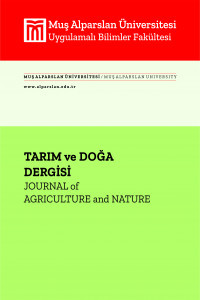Adoption potentials of Urea Deep Placement (UDP) technology among smallholder rice farmers in Kano state of Nigeria
Urea deep placement (UDP) technology, a package introduced by USAID MARKETS II is challenged with limited scope in adoption and diffusion, thus the need to investigate the obstacles affecting its adoption potential in the studied area. A cross sectional data elicited through a well-structured questionnaire coupled with interview schedule from a sample size of 300 respondents: adopters (192) and non-adopters (108) sampled via multi-stage sampling technique was used. The collected data were analyzed using Heckman’s model, Treatment effect model and Oaxaca-Blinder decomposition model. From the empirical findings it was established that improved seed varieties simultaneously influenced the adoption level and use-intensity of UDP technology. Further, it was found that knowledge awareness on the technology through USAID MARKET II, promoters of the technology, had significant impact on the adoption rate of the technology. However, the potential adoption rate was hampered due to incomplete diffusion, thus created a gap that hovers around 36.85-43.33%. Also, it was established that interaction effect on one hand- threefold decomposition and adoption discrimination effect termed project effect on the other hand- twofold decomposition were the major determinants of yield gap between the adopters and non-adopters. Generally, it was concluded that the prospect of the technology is very bright in the studied area. Consequently, the study recommends that the promoter of the project should adopt an effective cost approach i.e. farmer-to-farmer extension approach in scaling-up the rate of adoption of the UDP technology which exhibited a promising prospect in the studied area.
Adoption potentials of Urea Deep Placement (UDP) technology among smallholder rice farmers in Kano state of Nigeria
Urea deep placement (UDP) technology, a package introduced by USAID MARKETS II is challenged with limited scope in adoption and diffusion, thus the need to investigate the obstacles affecting its adoption potential in the studied area. A cross sectional data elicited through a well-structured questionnaire coupled with interview schedule from a sample size of 300 respondents: adopters (192) and non-adopters (108) sampled via multi-stage sampling technique was used. The collected data were analyzed using Heckman’s model, Treatment effect model and Oaxaca-Blinder decomposition model. From the empirical findings it was established that improved seed varieties simultaneously influenced the adoption level and use-intensity of UDP technology. Further, it was found that knowledge awareness on the technology through USAID MARKET II, promoters of the technology, had significant impact on the adoption rate of the technology. However, the potential adoption rate was hampered due to incomplete diffusion, thus created a gap that hovers around 36.85-43.33%. Also, it was established that interaction effect on one hand- threefold decomposition and adoption discrimination effect termed project effect on the other hand- twofold decomposition were the major determinants of yield gap between the adopters and non-adopters. Generally, it was concluded that the prospect of the technology is very bright in the studied area. Consequently, the study recommends that the promoter of the project should adopt an effective cost approach i.e. farmer-to-farmer extension approach in scaling-up the rate of adoption of the UDP technology which exhibited a promising prospect in the studied area.
___
- Kinuthia, B.K. and Mabaya, E.(2017).The impact of agricultural technology adoption on farmer welfare in Uganda and Tanzania. PEP Policy Brief No. 163. Retrieved on 26/02/2022 from www.pep-net.org (Partnership for Economic Policy)
- Kumar, A., Takeshima, H., Thapa, G., Adhikari, N., Saroj, S., Karkee, M. and Joshi, P. K.(2020). Adoption and diffusion of improved technologies and production practices in agriculture: Insights from a donor-led intervention in Nepal. Land Use Policy, 95:104621.
- Lowder, S.K., Skoet, J. and Raney, T.(2016).The number, size, and distribution of farms, smallholder farms, and family farms worldwide. World Development, 87, 16–29.
